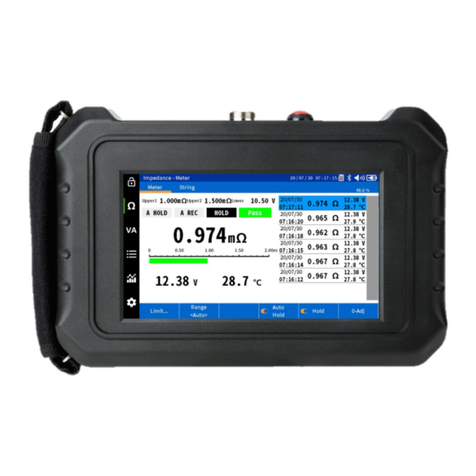
3
1.3. Safety precautions
This instrument is designed and manufactured to be compliant with IEC 61010-1,
an international standard on safety requirements for electrical equipment for
measurement, control and laboratory use, and has been thoroughly tested prior
to shipment to ensure it performs at its best. This user’s manual contains
general safety precautions to prevent danger to the user as well as information
on how best to use the instrument for a longer service life. Be certain that, prior
to use, you get familiarized with this manual.
1.3.1. User Manual
lBefore using the instrument, make sure to read this User’s Manual thoroughly
and fully understand.
lKeep this User’s Manual in an easily accessible location for quick reference
whenever needed.
lEnsure that the product is used in a manner not deviating its intended use
and following operating instructions specified in User’s Manual.
lCarefully read, understand and observe the safety instructions described in
this manual, including safety precautions indicated by symbols.
lWith regard to the use of clamp sensor, it is also required to carefully read
and understand the operating instructions on the clamp sensor.
The safety instructions described herein shall be observed during all phases of
operation; if not, it may lead to injury or safety accident. The Manufacturer
assumes no responsibility and liability for any loss or damage caused by the
customer’s failure to comply with these safety precautions including those as
indicated by Danger, Warning and Caution.
Danger
lImproper use in a manner not following correct operations and conditions
may lead to accidents causing damage to the product or serious bodily
injuries due to electrical shock as the protection provided by the instrument
can be compromised. Before using the instrument, make sure to check the
product works properly.
lNever clamp the probe onto circuits with voltage greater than 300 VAC
Measurement Category CAT IV, 600 VAC CAT III and 1000 VAC CAT II.
lDo not use the instrument in an environment where combustible gas,
explosive gas or steam is present, because it is dangerous.
lNever use the instrument if the instrument or your hands are wet, or when
moisture or beads of water have formed on the surface of the instrument.
- Measurement




























